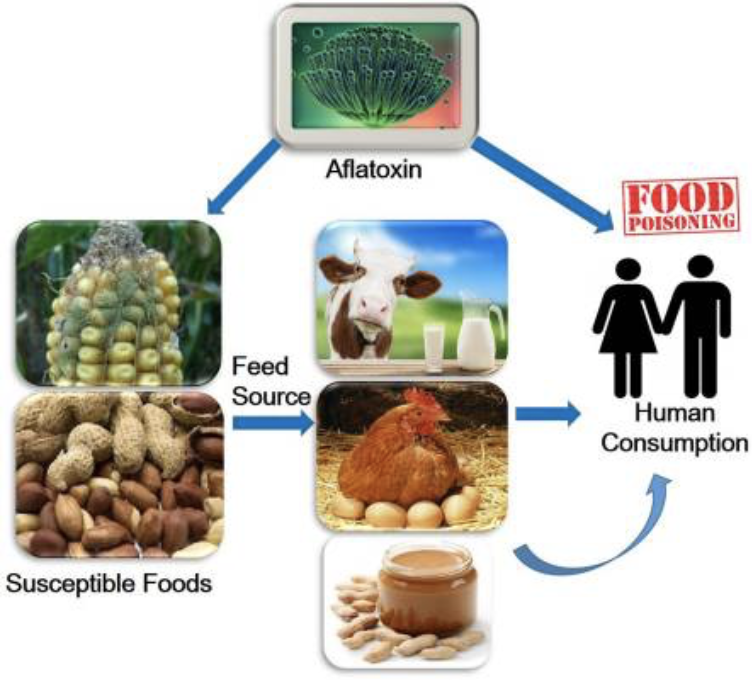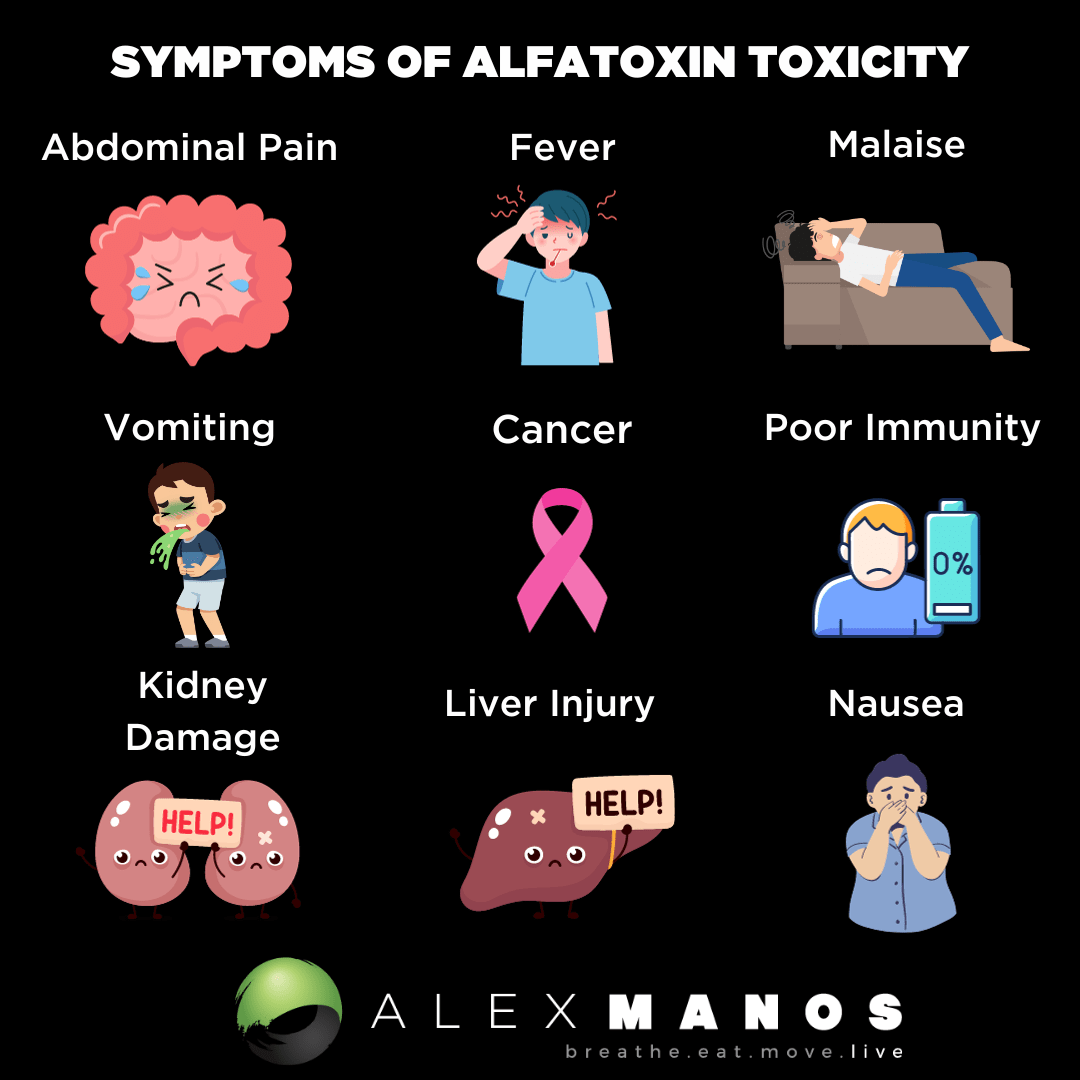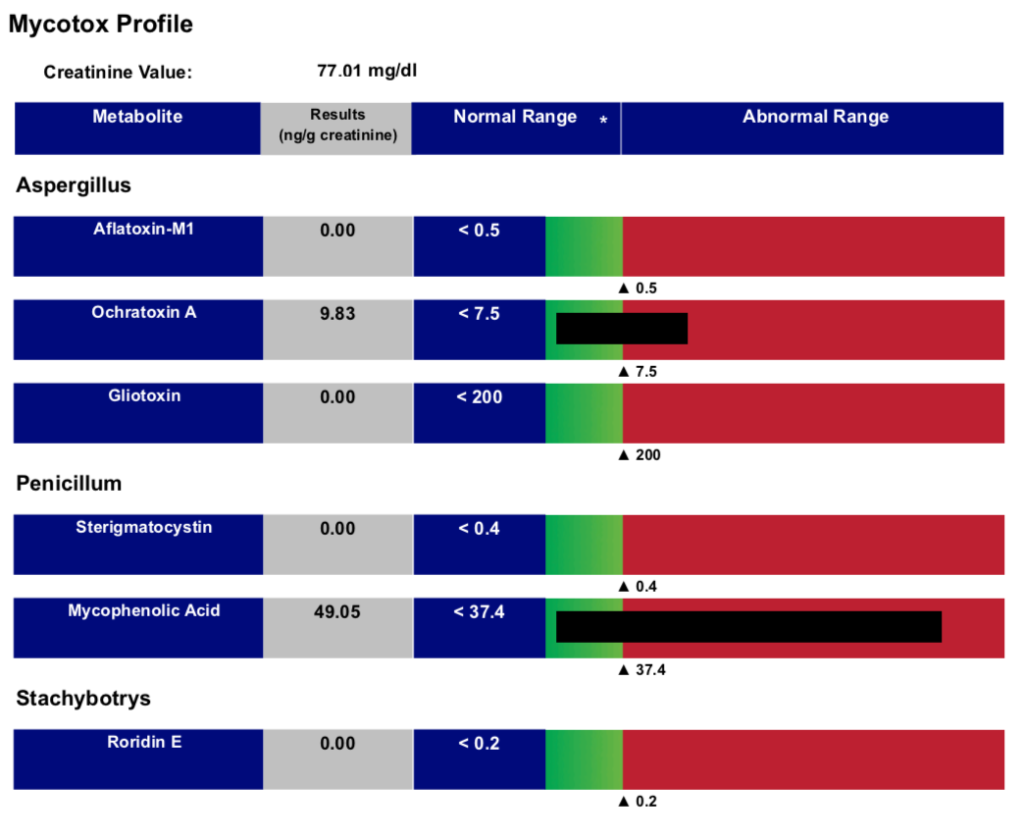Welcome to my blog on how to test for, detox from, and manage treatment of Alfatoxin.
After writing the master blog called The Ultimate Guide To Mycotoxins I thought I would write smaller blogs on each of the main mycotoxins. Let’s start this series with Alfatoxin and discuss how to test for it, detox from it and manage treatment. You might like to check out some of my other blogs, and the area dedicated to mycotoxins in my blog here.
- Mycotoxin Detoxification: A Case Study.
- How To Know If You Have Mycotoxins: Symptoms And Testing
- Mycotoxin Testing: What You Need To Know
If you are a practitioner wanting to become mould literate then I highly recommend Dr. Jill Crista’s professional training. Get 10% off with code alexmanos.
What Is Alfatoxin?
The World Health Organisation describe Aflatoxins are poisonous substances produced by certain kinds of fungi (moulds) that are found naturally all over the world; they can contaminate food crops and pose a serious health threat to humans and livestock.
Aflatoxins also pose a significant economic burden, causing an estimated 25% or more of the world’s food crops to be destroyed annually.
What Produces Alfatoxin?
Two closely related species of fungi are mainly responsible for producing the aflatoxins of public health significance: Aspergillus flavus and Aspergillus. parasiticus.

From Aflatoxins: A Global Concern for Food Safety, Human Health and Their Management, Front Microbiol. 2016; 7: 2170
What Foods Contain Alfatoxin?
There are more than 20 known aflatoxins, but four – aflatoxin B1, B2, G1 and G2 are particularly dangerous to humans and animals as they have been found in all major food crops. Most human exposure comes from:
- Contaminated nuts
- Grains and their derived products
- Liver and meat of animals which are fed with contaminated feed
Additionally, aflatoxin M1 (AFM1), a product of aflatoxin B1 (AFB1) metabolism, can be found in milk in areas of high aflatoxin exposure. Subsequently humans may be exposed to this aflatoxin through milk and milk products, including breast milk, especially in areas where the poorest quality grain is used for animal feed.
Watch my interview with Dr. Jill Crista, author of Break The Mold:
What Does Alfatoxin Do To The Body?
Long-term or chronic exposure to aflatoxins has several health consequences including:
- Aflatoxin are potent carcinogens and may affect all organ systems, especially the liver and kidneys; they cause liver cancer, and have been linked to other types of cancer.
- Aflatoxin are mutagenic in bacteria (affect the DNA), genotoxic, and have the potential to cause birth defects in children.
- Children may become stunted, although these data have yet to be confirmed because other factors also contribute to growth faltering e.g. low socioeconomic status, chronic diarrhoea, infectious diseases, malnutrition.
- Aflatoxins cause immunosuppression, therefore may decrease resistance to infectious agents (e.g. HIV, tuberculosis)
Early symptoms of liver damage caused by aflatoxins include:
- Fever
- Malaise
- Anorexia
- Abdominal pain
- Vomiting
- Hepatitis
Cases of acute poisoning are exceptional and rare (Etzel, 2002).
How Do I Test For Alfatoxin And Mycotoxins?
Mosaic Diagnostics have a mycotoxin urine profile available in the UK. Below is a sample of the report:
Testing allows you to monitor efficacy of your detox treatment, monitor your toxin burden of aflatoxin (and potential others), and tweak the program as needed.
Understanding Mycotoxin Testing
How Do I Avoid Exposure To Aflatoxin?
The World Health Organisation advise the consumer to:
- Carefully inspect whole grains and nuts for evidence of mould, and discard any that look mouldy, discoloured, or shriveled.
- Buy grains and nuts as fresh as possible; that have been grown as close to home as possible, and which have not been transported over a long time
- Buy only reputable brands of nuts and nut butters – aflatoxin moulds are not entirely killed by processing or roasting, so can show up in products e.g. peanut butter
- Make sure that foods are stored properly and are not kept for extended periods of time before being used
- Try to ensure his/her diet is diverse; this not only helps to mitigate aflatoxin exposure, but also improves health and nutrition. Consumers who lack dietary diversity need to pay extra attention to minimize the risk of high exposure to aflatoxins. For example, extensive aflatoxin exposure has been reported from areas where people get a major part of their daily calorie intake from maize; this foodstuff is commonly contaminated with aflatoxins and needs to be handled properly both before and after harvest.
However this is not taking in to consideration the mycotoxins that might be produced from water-damaged buildings. In these situations, leaving the property may be needed.
How Do You Detox Alfatoxin From The Body?
For U.S readers check out Dr. Crista custom formulations.
For those in the U.K get 10% off your supplements at Healthpath using code ‘alexmanos10’.
Check out my article The Ultimate Guide To Mycotoxins which discusses interventions to support the detoxification of mycotoxins. Primary considerations for aflatoxin include:
Bitters: Bitters support detoxification and digestion. Bitters support bile flow, a kay aspect on optimal detoxification, and bile is anti-bacterial and thus protective against conditions such as small intestine bacterial overgrowth. They also stimulate the production of digestive enzymes/juices.
Phosphatidylcholine: Dr. Crista says if there was one edit she could make to her book Break The Mold it would be to add phosphatidylcholine to her recommendations. It aids the detox of mycotoxins as it helps stimulate and thin bile. It also supports cellular health.
Sequestering Agent (Binders): Sequestering agents refer to non-absorbable materials capable of binding toxins in the gastrointestinal tract, thus reducing enterohepatic recirculation and ultimately the body burden of toxins. These agents are not absorbed into systemic circulation; therefore, side effects are typically limited to gastrointestinal symptoms and potential malabsorption of medications and nutrients, especially if the dose is poorly timed. Sequestering agents have a large surface area to volume ratio, giving large absorptive capacity. Several agents have shown specific efficacy in lowering mycotoxin and endotoxin levels including cholestyramine (a medication), activated carbons (charcoal), and chlorella. Additionally, these agents are nonspecific and can bind additional toxins, helping to lower ‘total body burden’ of toxins. One of my preferred binders is GI Detox. Dr. Nathan in his work has found specific mycotoxins have an affinity for specific binders and thus if you know what mycotoxins you have been exposed to, you may be able to personalise treatment in regards to which binder is most appropriate.
Antifungals such as oregano oil.
Probiotics: The ability of Lactobacillus plantarum and Lactobacillus rhamnosus GAF01 to degrade or bind aflatoxin M1. Lactobacillus rhamnosus GG and Lactobacillus casei have a significant hepatoprotective effect against aflatoxin B1. Mycotoxins have also been shown to disrupt the integrity of the gut lining (i.e cause leaky gut) – another reason why probiotics might be helpful.
Omega 3 Fats: Omega 3 fats are helpful at ‘diluting’ the toxins which build up in the fatty parts of our mitochondria, cells, organs and body. This tip came from my conversation with Dr. Jill Crista, a specialist in mycotoxins.
Liposmal Glutathione: Glutathione is frequently recommended to support detoxification of mycotoxins. Research has shown how we need an ‘on demand’ source of glutathione to help detoxification of mycotoxins. The issue is that mycotoxins have been found to inhibit the enzymes which regulate the endogenous production of glutathione!!
Other anti-inflammatories and anti-oxidant compounds such as resveratrol, NAC and alpha-lipoic acid.
Sweating: Sauna therapy,. I have have had excellent feedback from clients who have rented or bought products from Get-Fitt. They have a wide range of products including clothing! Remember, human sweat has found to contain mycotoxins.
The Use Of Binders
The principle is as follows: aflatoxin, which have contaminated foods, can be bound to an agent to mitigate the aflatoxin-induced health risks after consumption. Binders include bacteria cells, yeasts, proteins, and clays; the latter have been especially analysed for use in animal feeds. The hypothesis is that the binding agent and the bound toxin would pass through the gastrointestinal tract without, or at least with less, uptake and thus less damage caused by the toxins. (source)
Evidence of the binding ability of aflatoxins with LAB cells has been shown through a number of studies in laboratory conditions, some with 100% binding efficiency. Binding is speculated to be an instant phenomenon, but also binding levels have been observed to increase over time.
Contrary to observed instant binding, some studies have reported no immediate binding at all.
Binding has been shown to be dependent also on the concentration of the lactic acid bacteria cells.
Overall it seems there are many unanswered questions when it comes to bacteria/probiotics and there use as binders. Having said that, one absolutely essential component of treatment is supporting the gut and the gut microbiome.
Books On Alfatoxin/Mycotoxins Detox:
Research on Alfatoxin and Detox:
- Detection of Mycotoxins in Patients With Chronic Fatigue Syndrome
- Dampness and Mold Hypersensitivity Syndrome and Vaccination as Risk Factors for Chronic Fatigue Syndrome
- The Putative Role of Viruses, Bacteria, and Chronic Fungal Biotoxin Exposure in the Genesis of Intractable Fatigue Accompanied by Cognitive and Physical Disability
- Chronic Illness Associated With Mold and Mycotoxins: Is Naso-Sinus Fungal Biofilm the Culprit?
- Mycotoxin: Its Impact on Gut Health and Microbiota
- A Review of the Mechanism of Injury and Treatment Approaches for Illness Resulting From Exposure to Water-Damaged Buildings, Mold, and Mycotoxins
- Deficient Glutathione in the Pathophysiology of Mycotoxin-Related Illness
- Role of Mycotoxins in the Pathobiology of Autism: A First Evidence
- Mycotoxins and human disease: a largely ignored global health issue
- Mycotoxins
- Aflatoxin: A Global Concern for Food Safety, Human Health and Their Management
- Unexpected aflatoxin exposure in a woman in northern Italy: a case report
Alex is a certified Functional Medicine Practitioner (IFMCP) and has a MSc in Personalised Nutrition. He is also a breathwork facilitator with a background in personal training and massage therapy. He also runs The Resiliency Program - a 24 week program aimed at building physical, mental, emotional, and spiritual resilience.






